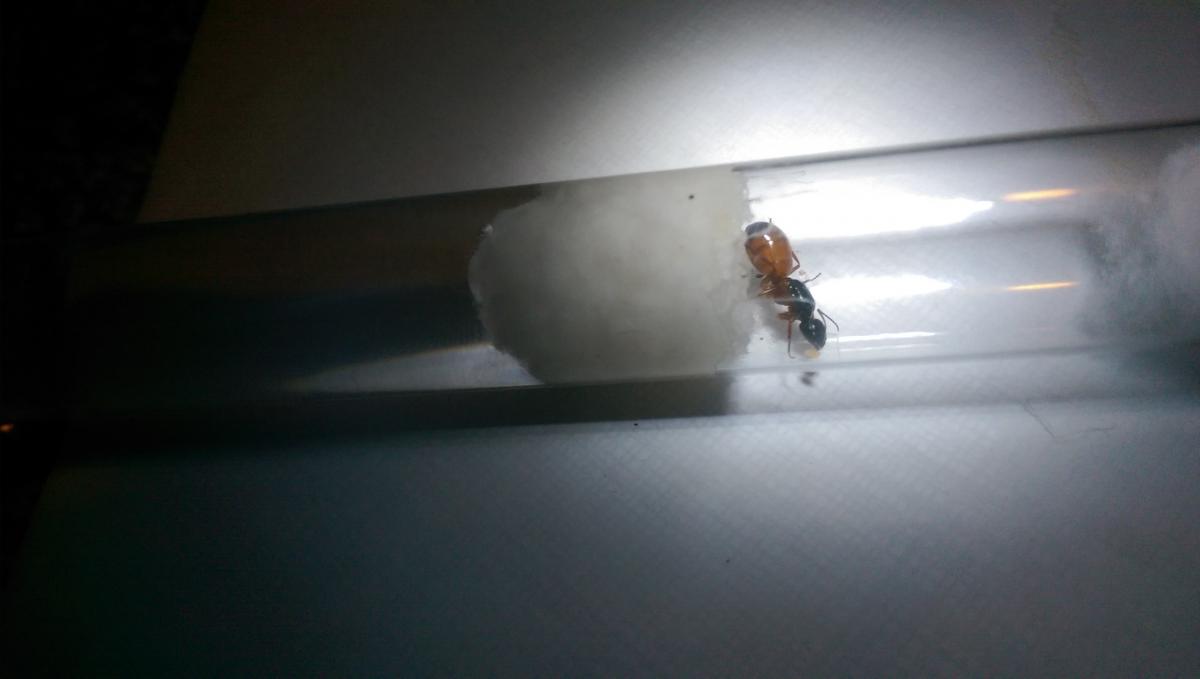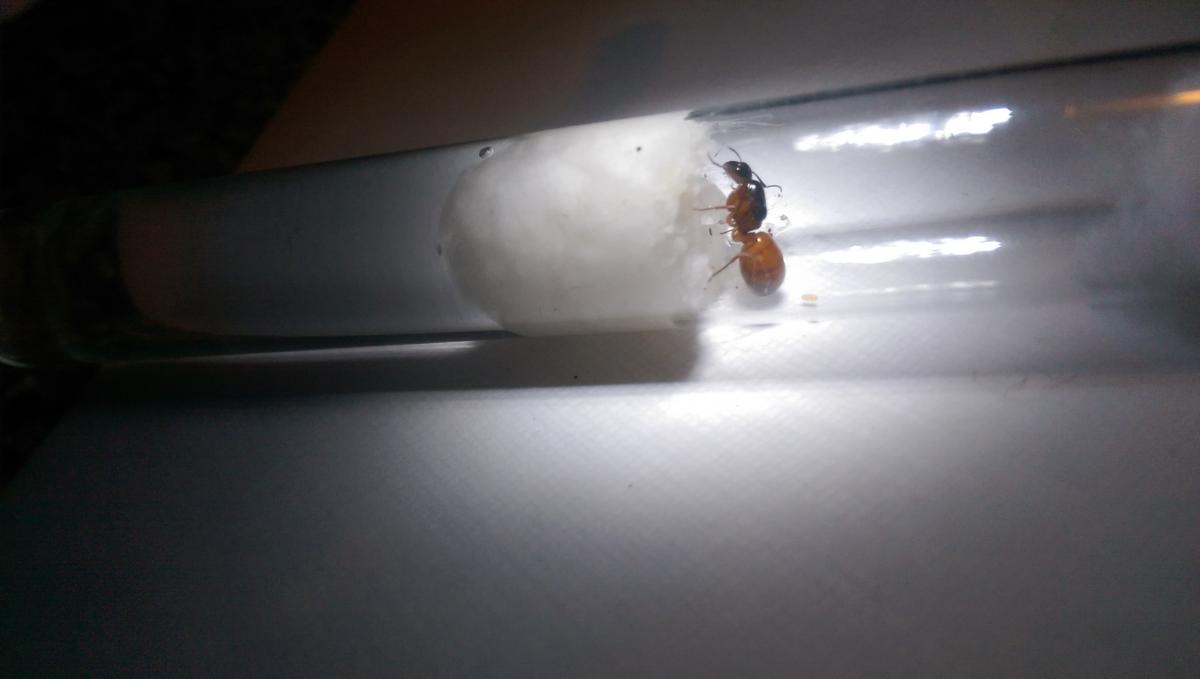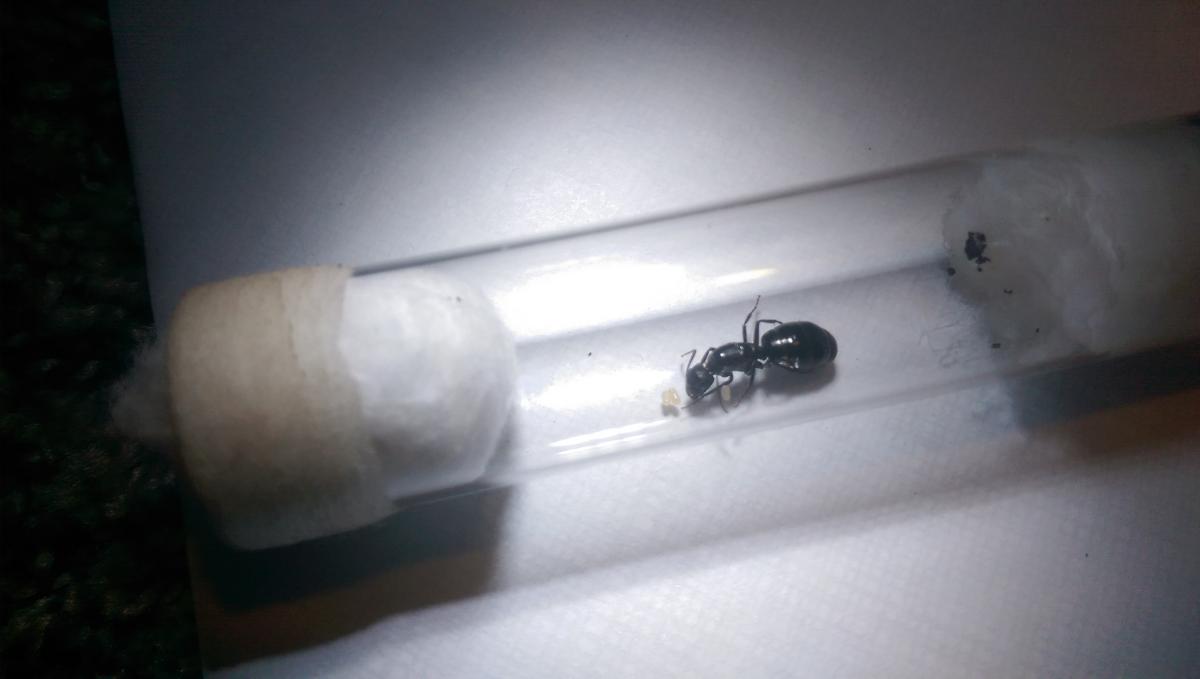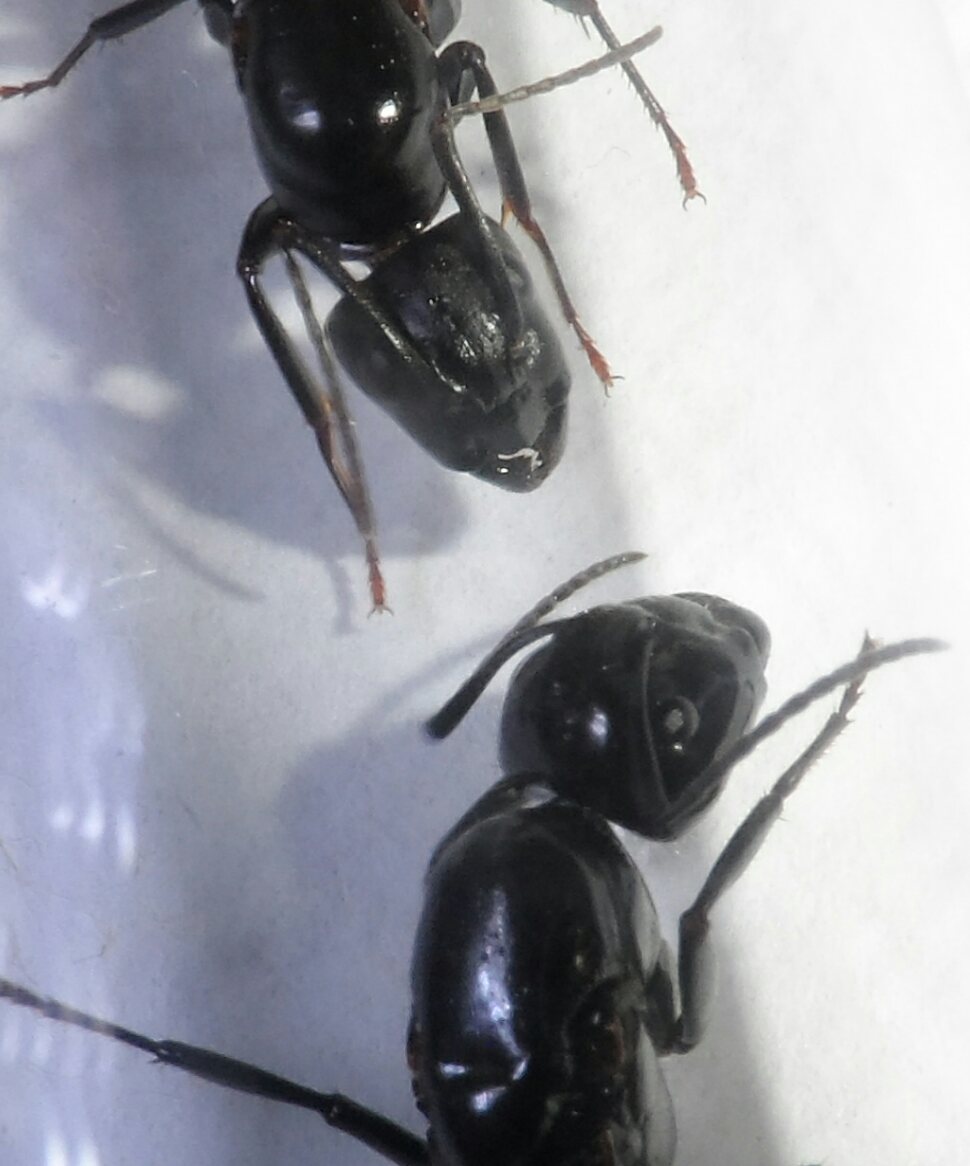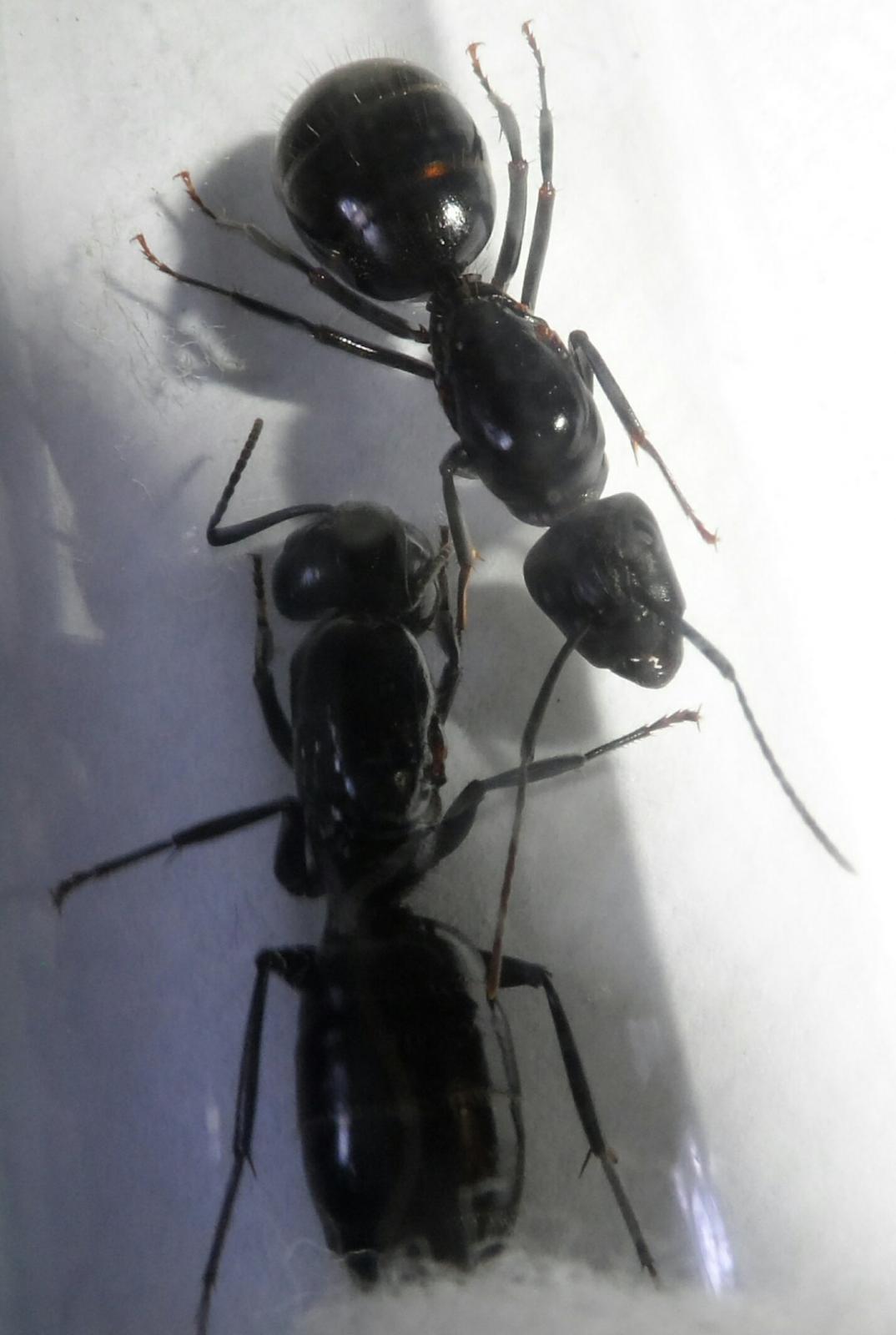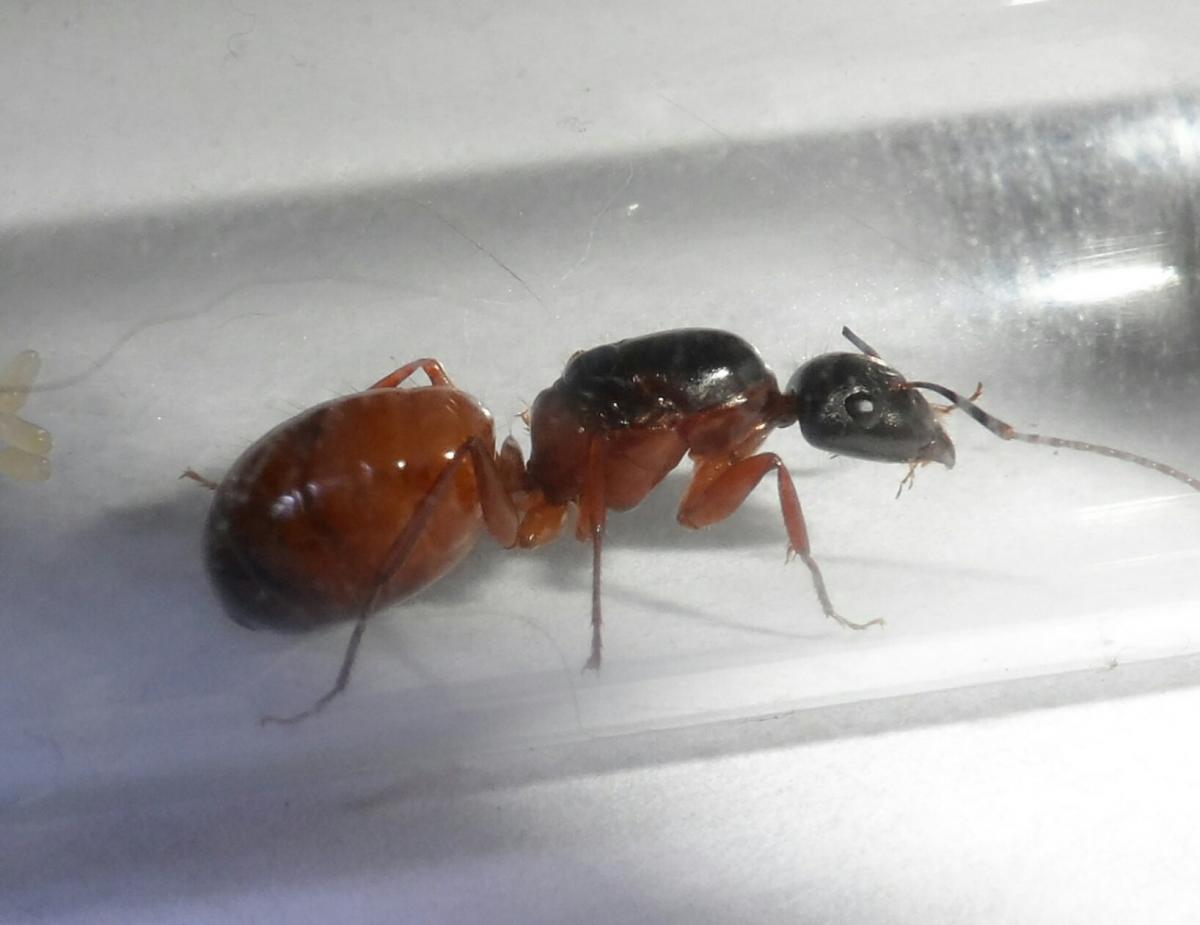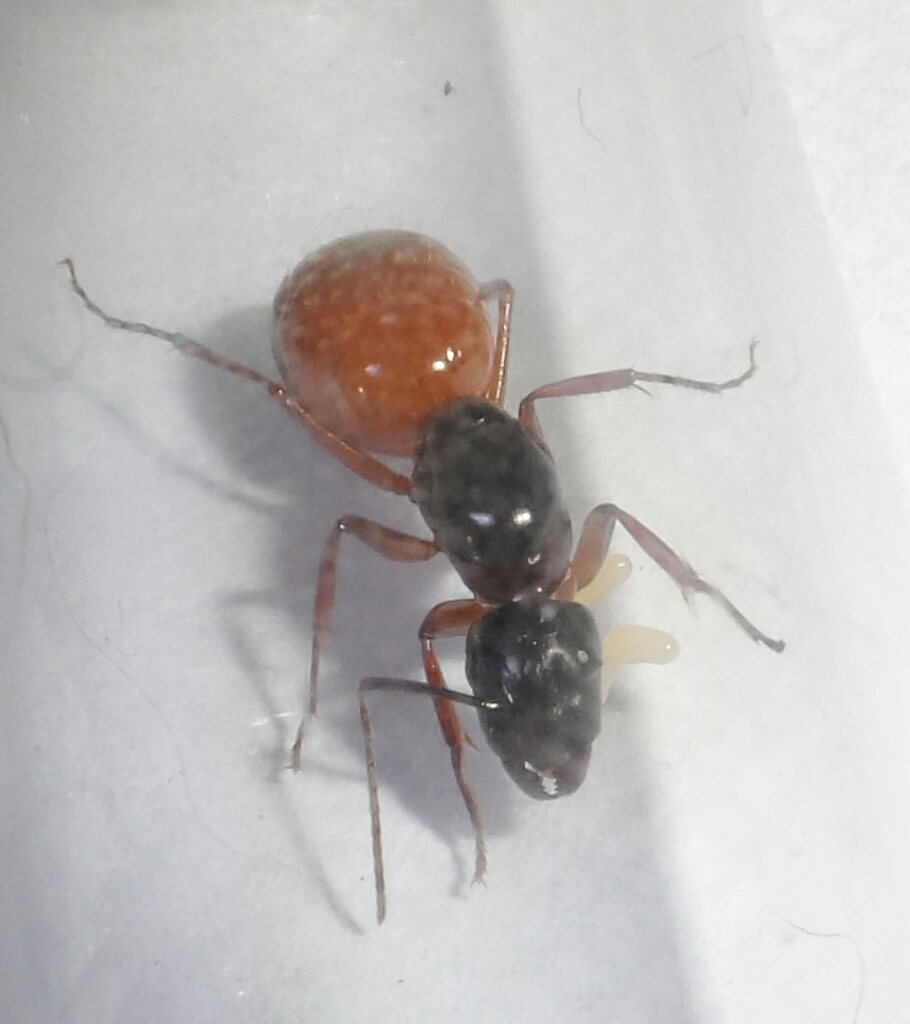- Formiculture.com
- Forums
- Gallery
- Members
- Member Map
- Chat
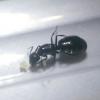
2 types of new queens
Started By
Typo--29
, May 18 2016 12:31 AM

Best Answer dspdrew , May 22 2016 - 2:31 PM
Looks like a black C. vicinus to me.
Go to the full post
12 replies to this topic
#1
 Offline
-
Posted May 18 2016 - 12:31 AM
Offline
-
Posted May 18 2016 - 12:31 AM
I recently caught 2 types of queens and I'm fairly certain both are campontus and one type is an all black vicinus but the other I have no idea
#2
 Offline
-
Posted May 18 2016 - 4:44 AM
Offline
-
Posted May 18 2016 - 4:44 AM
It's impossible to know without having a location or other information.
#3
 Offline
-
Posted May 18 2016 - 8:38 AM
Offline
-
Posted May 18 2016 - 8:38 AM
Magalia in northern California up in the woods(evergreen) around 2,500 feet up on the eastern side of the Sacramento vally all collected early to mid May
Edited by Typo--29, May 18 2016 - 1:57 PM.
#4
 Offline
-
Posted May 18 2016 - 1:54 PM
Offline
-
Posted May 18 2016 - 1:54 PM
Also I'm not sure how to measure them. Would holding a ruler up to the test tube be accurate enough?
#5
 Offline
-
Posted May 18 2016 - 3:47 PM
Offline
-
Posted May 18 2016 - 3:47 PM
Also I'm not sure how to measure them. Would holding a ruler up to the test tube be accurate enough?
Anything's better than nothing. How big is the test tube?
#6
 Offline
-
Posted May 18 2016 - 3:52 PM
Offline
-
Posted May 18 2016 - 3:52 PM
I would suspect the black one is something other than a black C. vicinus. It's hard to ID Camponotus in the West without any high resolution pictures, particularly of the face.
#7
 Offline
-
Posted May 19 2016 - 1:07 AM
Offline
-
Posted May 19 2016 - 1:07 AM
The all black ones at about 1.5-1.6 centimeters and ones with the yellowish are about 1.4
#8
 Offline
-
Posted May 20 2016 - 9:42 AM
Offline
-
Posted May 20 2016 - 9:42 AM
I tried for a while but my camera just isn't good enough to get any better pics but the all black queens seem to be perfectly fine living in pairs I have two pairs(queens) living together and I have noticed eggs in both of their test tubes and two solitary queens that have accepted wild workers (all sets living together successfully for almost a week)
Edited by Typo--29, May 20 2016 - 9:47 AM.
#9
 Offline
-
Posted May 22 2016 - 1:18 PM
Offline
-
Posted May 22 2016 - 1:18 PM
#10
 Offline
-
Posted May 22 2016 - 2:31 PM
Best Answer
Offline
-
Posted May 22 2016 - 2:31 PM
Best Answer
Looks like a black C. vicinus to me.
- Miles likes this
#11
 Offline
-
Posted May 22 2016 - 2:47 PM
Offline
-
Posted May 22 2016 - 2:47 PM
#12
 Offline
-
Posted May 22 2016 - 4:42 PM
Offline
-
Posted May 22 2016 - 4:42 PM
I think the orange and black one might be C. semitestaceus. The pictures just aren't high enough resolution to say for sure. A lot of the subgenus Tanaemyrmex is really hard to tell apart, even when looking at them directly on a microscope.
- gcsnelling and Miles like this
#13
 Offline
-
Posted May 22 2016 - 7:40 PM
Offline
-
Posted May 22 2016 - 7:40 PM
Thank you for the help I really had no leads on that one I spent a good 2 hours going through different sites from Google and I just couldn't figure it out
1 user(s) are reading this topic
0 members, 1 guests, 0 anonymous users



